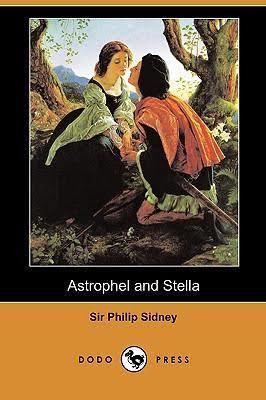Originally published 1591 | ||
 | ||
Similar Philip Sidney books, Sonnet books | ||
Sir philip sidney s astrophel and stella sonnet number 47
Probably composed in the 1580s, Philip Sidney's Astrophil and Stella is an English sonnet sequence containing 108 sonnets and 11 songs. The name derives from the two Greek words, 'aster' (star) and 'phil' (lover), and the Latin word 'stella' meaning star. Thus Astrophil is the star lover, and Stella is his star. Sidney partly nativized the key features of his Italian model Petrarch, including an ongoing but partly obscure narrative, the philosophical trappings of the poet in relation to love and desire, and musings on the art of poetic creation. Sidney also adopts the Petrarchan rhyme scheme, though he uses it with such freedom that fifteen variants are employed.
Contents
- Sir philip sidney s astrophel and stella sonnet number 47
- Publishing history
- Astrophel vs Astrophil
- Selected sonnets
- Musical settings
- References
Some have suggested that the love represented within the sequence may be a literal one as Sidney evidently connects Astrophil to himself and Stella to Lady Penelope Devereux, afterward Lady Rich. Sidney and Lady Penelope had been betrothed when the latter was a child. For some reason the match was broken off, and Lady Penelope married Lord Rich, with whom she lived for a while most unhappily. She is thought to be the Penelope Rich, the wife of Robert Rich, 3rd Baronet. Payne and Hunter suggest that modern criticism, though not explicitly rejecting this connection, leans more towards the viewpoint that writers happily create a poetic persona, artificial and distinct from themselves.
Publishing history
Many of the poems were circulated in manuscript form before the first edition was printed by Thomas Newman in 1591, five years after Sidney's death. This edition included ten of Sidney's songs, a preface by Thomas Nashe and verses from other poets including Thomas Campion, Samuel Daniel and the Earl of Oxford. The text was allegedly copied down by a man in the employ of one of Sidney's associates, thus it was full of errors and misreadings that eventually led to Sidney's friends ensuring that the unsold copies were impounded. Newman printed a second version later in the year, and though the text was more accurate it was still flawed. The version of Astrophil and Stella commonly used is found in the folio of the 1598 version of Sidney's Arcadia. Though still not completely free from error, this was prepared under the supervision of his sister the Countess of Pembroke and is considered the most authoritative text available. All known versions of Astrophil and Stella have the poems in the same order, making it almost certain that Sidney determined their sequence.
Astrophel vs. Astrophil
The Oxford University Press collection of Sidney's major works has this to say about the title:
There is no evidence that the title is authorial. It derives from the first printed text, the unauthorized quarto edition published by Thomas Newman (1591). Newman may also have been responsible for the consistent practice in early printings of calling the lover persona 'Astrophel'. Ringler emended to 'Astrophil' on the grounds of etymological correctness, since the name is presumably based on Greek aster philein, and means 'lover of a star' (with stella meaning 'star'); the 'phil' element alluding also, no doubt, to Sidney's Christian name.
Selected sonnets
1
Loving in truth, and fain in verse my love to show,
That she (dear She) might take some pleasure of my pain:
Pleasure might cause her read, reading might make her know,
Knowledge might pity win, and pity grace obtain,
Studying inventions fine, her wits to entertain:
Oft turning others' leaves, to see if thence would flow
Some fresh and fruitful showers upon my sun-burned brain.
Invention, Nature's child, fled step-dame Study's blows,
And others' feet still seemed but strangers in my way.
Thus great with child to speak, and helpless in my throes,
9
Queen Vertues court, which some call Stellas face,
Prepar'd by Natures chiefest furniture,Hath his front built of Alabaster pure;Gold is the covering of that stately placeThe doore by which sometimes comes forth her Grace,
Red Porphir is, which locke of pearl makes sure:Whose porches rich (which name of cheeks endure)Marble mixt red and white do enterlace.The windowes now through which this heav'nly guest
Looks over the world, and can find nothing such,Which dare claime from those lights the name of best.Of touch they are that without touch doth touch,
Which Cupids selfe from Beauties myne did draw:Of touch they are, and poore I am their straw.19
On Cupid's bow how are my heartstrings bent,
My best wits still their own disgrace invent:
For though she pass all things, yet what is all
Oh let me prop my mind, yet in his growth,
20
Fly, fly, my friends, I have my death wound; fly!
So tyrant he no fitter place could spy,
Poor passenger, pass now thereby I did,
But straight I saw motions of lightning grace,
